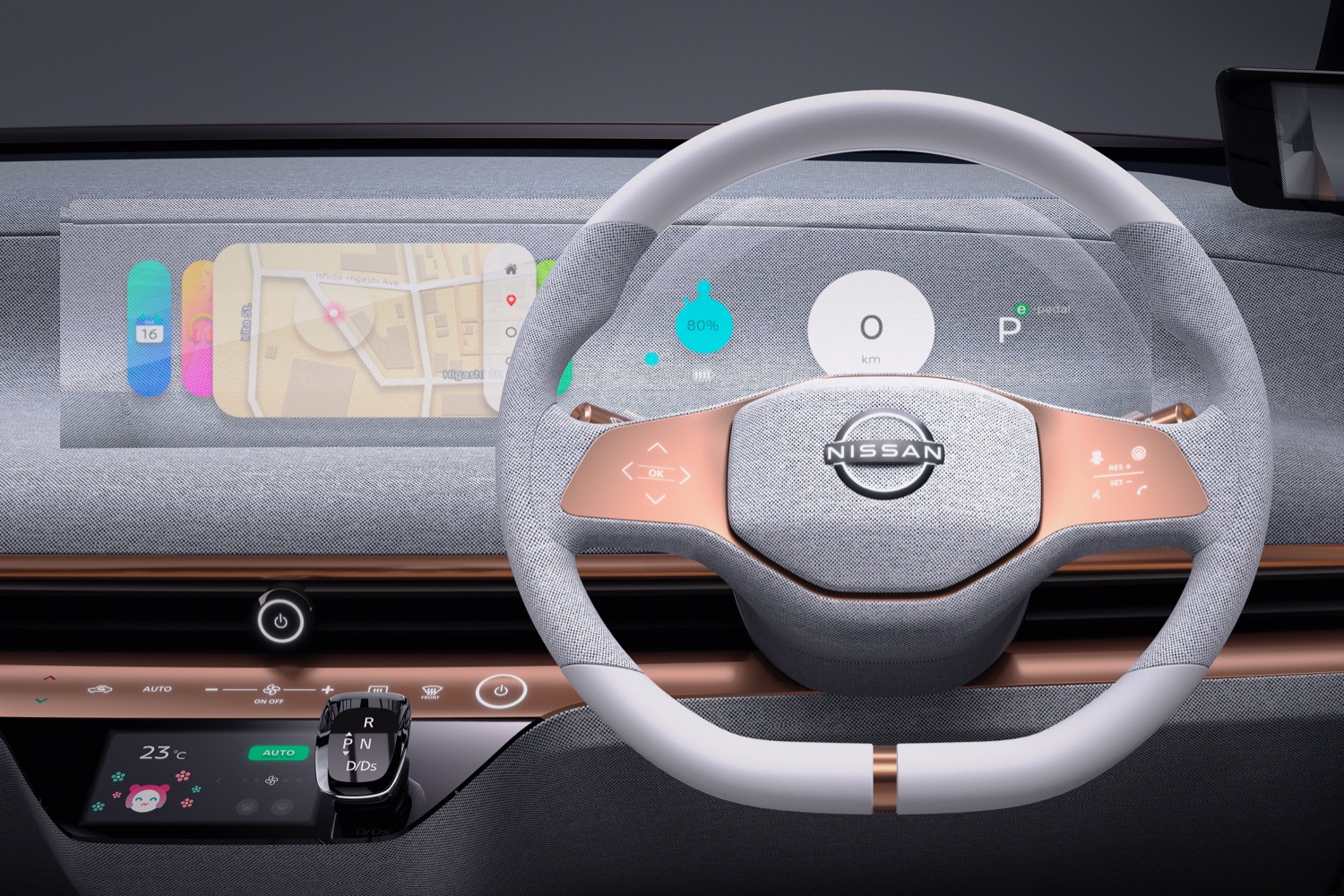The Nissan Leaf is the bestselling electric car in history, but Nissan hasn’t tried to capitalize on that popularity by offering more electric models. The Nissan IMk concept, however, hints at what a different kind of Nissan electric car could look like. Debuting at the 2019 Tokyo Motor Show, Nissan calls the IMk the “ultimate urban commuter.”
Designers followed the typical city car playbook, creating a vehicle that is part Smart car, part Kia Soul. The petite proportions and minimal overhangs shrink the IMk’s footprint, which should make it easier to park. The boxy, tall, shape helps maximize interior space within that small footprint. A similar approach worked for the BMW i3, a production electric car designed for city driving, so it should work for Nissan too.
The interior is designed to feel more like a cafe or lounge than the inside of a car, according to Nissan. Designers used light-tone materials to make the interior feel cozier, and eliminated as many analog controls as possible. A single panel displays vital information, such as speed and navigation directions, while a holographic display handles other functions. The IMk also integrates Nissan’s “invisible to visible” tech, which is designed to give drivers more information about their surroundings. It can even let drivers “see” through buildings or other obstacles, according to Nissan.
The IMk concept features the latest version of Nissan’s ProPilot Assist system, dubbed ProPilot 2.0. Currently available only in Japan, ProPilot 2.0 can handle acceleration, braking, and steering on highways. Drivers can even take their hands off the wheel for limited periods of time, according to Nissan, although the system can’t execute lane changes like Tesla’s Autopilot. The IMk concept also has ProPilot Remote Park, which allows the car to autonomously search for a parking spot after the driver gets out. Think of it as a more advanced version of Tesla’s Smart Summon.
ProPilot 2.0 is already available on some Nissan models in Japan, and may be offered in the United States eventually. Given the unreliability of Tesla’s Smart Summon, and potential regulatory and liability issues, it may be some time before ProPilot Remote Park becomes available to customers, however. As for the IMk concept itself, Nissan would not discuss production plans. But the automaker does want to grow its electric car lineup, so it’s possible that a city car like the IMk could hit showrooms eventually.
Editors' Recommendations
- Buick announces plan to go all-electric with stunning EV concept
- If you want to drive this electric Jaguar, you’ll have to play Gran Turismo
- The turbine-electric Mitsubishi Mi-Tech reminds us what’s great about concepts
- Honda’s new hybrid Fit is here, but will it jazz up the firm’s American range?
- Lexus plugs in its electric car offensive with an innovative concept












